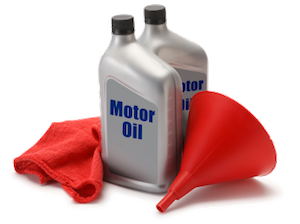home | e-mail | terms of use
oilspecifications.org
About Oil Drain Intervals
Many car owners still believe that the motor oil should be changed once in every 5000 miles. It's not that simple. Vehicle manufacturers usually set two oil change intervals: one of them is measured in miles (or kilometers) while the other one is measured in months. Both are important.
The first one is obvious: the more you drive the more you use your engine and your oil. The more the oil is used the more do its additive reserves get depleted and the quicker the long chain hydrocarbon molecules get torn apart. But why does time matter? When the vehicle is parked the oil is not used after all. That is true, but as the oil gets used it also gets contaminated. Deposits form, oxidation occurs, its viscosity changes, even its pH value changes. Since these are caused by the build-up of contaminants the process goes on even when the engine is turned off.
There is also another reason why time matters. Not every mile puts the same stress on the engine and on the oil. If you are driving in the city, you start your car in the morning, you drive 5 miles to your workplace then you drive back home in the evening while also sitting in a traffic jam you put a much larger amount of specific stress on the engine and on the oil than a truck driver who drives long distances on a highway. It is not unrealistic to assume that if you do not reach the oil change interval specified in miles within 12 months then you are probably making these short trips and 1 mile of yours counts like 5 or more stress-wise compared to the average. So limiting the oil change interval in time as well makes sure that the oil that receives higher specific stress gets changed sooner.
Oil drain intervals get longer though. The well known 5000 mile oil change interval is largely a thing of the past now. As oils get better and better the longer they can do their job. Modern additive packages ensure that oils last a long time and withstand the heat and contamination for longer than they used to several decades ago. Many car manufacturers allow extended oil change intervals and some cars even keep track of the oil's condition. Of course there is no mobile laboratory installed into any of them but tracking some indicators like RPM, temperature, number of cold starts, etc. is enough for the computer to make an educated guess about the condition of the oil. In these cases the oil drain interval is not set in stone since it is perfectly possible for the computer to reduce or extend the interval based on the actual conditions.
Last, but not least it should be mentioned that not changing the oil with the required frequency is a slow killer for your engine. The adverse effects of the skipped oil change will probably not be obvious very quickly. Sometimes everything may seem fine for years. But on the inside there will be excessive wear, deteriorated seals and an engine that is in a far worse condition than it should be based on its time of manufacture.


